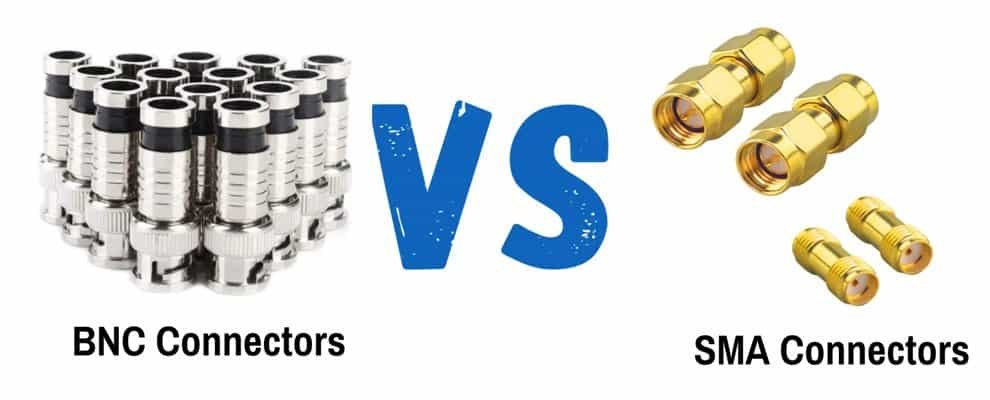What is the difference between BNC and SMA?

30
Jun
 Coaxial Cable Assembly
Coaxial Cable Assembly
 Microwave Test Cable
Microwave Test Cable
 Coaxial RF Connector
Coaxial RF Connector
 Coaxial RF Adapter
Coaxial RF Adapter
 Coaxial RF Termination
Coaxial RF Termination
 Coaxial RF Test Probe
Coaxial RF Test Probe
 Coaxial RF Attenuator
Coaxial RF Attenuator
 RF Switch
RF Switch Coaxial RF Power Dividers
Coaxial RF Power Dividers
When it comes to RF connectors, two popular options stand out: SMA and BNC. Understanding the differences in the SMA vs BNC debate is key to picking the right one for your needs. Whether you’re setting up a high-frequency system or a simple audio setup, choosing between SMA vs BNC connectors can impact performance and efficiency. This article explores the problem of selecting the right connector, analyzes their differences, and offers solutions to help you decide.
Selecting between BNC vs SMA connectors can be tricky. Do you need quick connections or high-frequency precision? Are size and durability factors in your project? Without clear guidance, you might end up with a connector that doesn’t meet your requirements, leading to signal issues or wasted costs. Let’s break down the difference between BNC and SMA connectors to solve this.
To make an informed choice, we’ll compare SMA vs BNC connectors based on frequency range, connection type, size, and applications.
If your project exceeds 4 GHz, SMA vs BNC cable performance leans heavily toward SMA.
For quick swaps, BNC vs SMA connector ease favors BNC. For stability, SMA wins.
In SMA vs BNC connectors, SMA suits compact, rugged needs; BNC fits where size isn’t an issue.
The SMA connector vs BNC choice hinges on your application’s frequency and connection demands.
Sometimes, you might mix them—BNC for low-frequency parts, SMA for high-frequency sections. Just ensure compatibility with adapters if needed.
Beyond SMA vs BNC, other options might fit your needs:
These alternatives can refine your SMA vs BNC cable decision if neither fully fits.
In the SMA vs BNC comparison, neither is universally “better”—it’s about your project. BNC excels in quick, low-frequency tasks; SMA dominates in high-frequency, secure applications. Evaluate frequency, connection needs, size, and use case to pick the winner in SMA connector vs BNC. With this insight, you’re ready to optimize your RF setup and avoid costly mismatches.
Need help picking connectors for your next project? Contact us for expert advice and tailored solutions.
Not directly—you’d need an adapter. But this might affect signal quality, especially at high frequencies.
It depends. SMA vs BNC connectors—SMA is superior for high frequencies; BNC is easier for quick, low-frequency use.
The TNC connector blends BNC’s design with threading, handling up to 12 GHz—stronger than BNC, less precise than SMA.
They can work, but BNC vs SMA connector practicality favors BNC for video due to its quick-connect nature.
 Coaxial Cable Assembly
Coaxial Cable Assembly
 Microwave Test Cable
Microwave Test Cable
 Coaxial RF Connector
Coaxial RF Connector
 Coaxial RF Adapter
Coaxial RF Adapter
 Coaxial RF Termination
Coaxial RF Termination
 Coaxial RF Test Probe
Coaxial RF Test Probe
 Coaxial RF Attenuator
Coaxial RF Attenuator
 RF Switch
RF Switch Coaxial RF Power Dividers
Coaxial RF Power Dividers Coaxial Cable Assembly
Coaxial Cable Assembly
 Microwave Test Cable
Microwave Test Cable
 Coaxial RF Connector
Coaxial RF Connector
 Coaxial RF Adapter
Coaxial RF Adapter
 Coaxial RF Termination
Coaxial RF Termination
 Coaxial RF Test Probe
Coaxial RF Test Probe
 Coaxial RF Attenuator
Coaxial RF Attenuator
 RF Switch
RF Switch Coaxial RF Power Dividers
Coaxial RF Power DividersNo account yet?
Create an Account